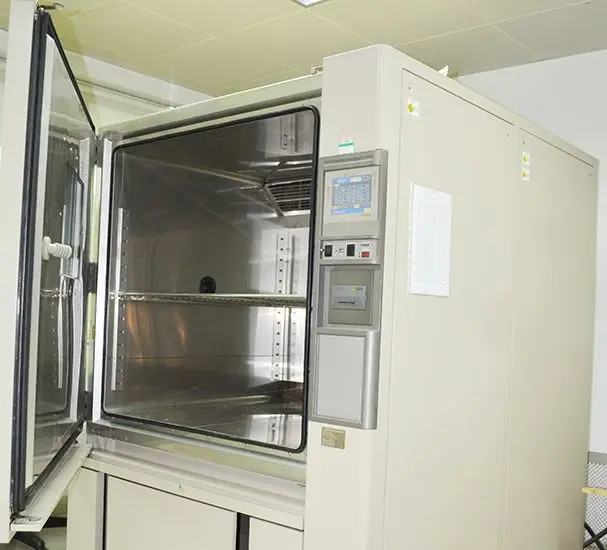
Australia RCM Mark Requirements
As of March 1, 2013, a new Electrical Equipment Safety Scheme (EESS)has been implemented across all Australian states and territories except New South Wales (NSW), as well as New Zealand. This system consolidates the national requirements for electrical equipment safety. The RegULatory Compliance Mark (RCM)has become the single compliance symbolunder the EESS for both Australia and New Zealand.
The RCM is a trademark owned by regulatory authoritiesin both countries, indicating that a product complies with both safetyand EMC (Electromagnetic Compatibility)requirements. While the RCM itself is not mandatory, obtaining it requires prior registration with a Supplier Code Number (SCN)issued by the relevant authority.

Key Regulatory Changes (Effective from March 1, 2016):
1. All electrical equipment under the EESS scope must bear the rcm markif sold within the EESS jurisdiction or requiRED under ACMA (or RSM) labeling notices.
2. Previous marks (Electrical Safety Approval Number, C-Tick, A-Tick)are no longer used.
3. All Responsible Suppliersmust register with the national database.
4. Mandatory compliance productsrequire certification from an approved regulatory body.
5. Non-mandatory productsmay be traded without certification, but must still comply with AS/NZS 3820:1998 – Essential Safety Requirements for Low Voltage Electrical Equipment.
6. To obtain the RCM mark, the product must pass:
a. Electrical safety certification
b. emc testing
c. Importer declaration and registration
Meanwhile, the Australian Communications and Media Authority (ACMA)has integrated the C-Tickand A-Tickmarks into the unified RCMmark. Products previously certified under C-Tick or A-Tick may still be sold during a three-year transitional period, during which suppliers must register in the database and switch to the RCM.
Applicable Regions
Australia
New Zealand
Official Website: https://www.acma.gov.au/
RCM = Safety + EMC + Importer Declaration
EMC Classification Based on AS/NZS 4417.2:
Level 1 (Low Risk)– Typically DC-powered products
1. Submit EMC report to apply for RCM (C-TICK)
2. Supplier must retain English documentation proving compliance at time of manufacturing or import.
3. Safety declaration is required.
4. Records must be kept for 5 yearsfrom the date of last import/manufacture.
5. Labeling: RCM + Brand Name
Level 2 (Medium Risk)– Typically AC-powered products
1. Submit EMC reportand safety reportfor RCM (C-TICK)
2. Supplier must maintain a compliance folderaccessible within 10 business days or upload to national database.
3. Must include:
a. English product description
b. Test reports by accredited labs or qualified personnel
c. Safety declaration
Level 3 (High Risk)– Reference list required
1. Submit EMC report, safety report, and saa certificatefor RCM (C-TICK)
2. Register with EESS
3. Certificate holders may be located overseas
Applicable Product Categories
● Telecommunications
1. Devices connecting to telecommunications networks
2. Cables, plugs, sockets, and connectors used in residential or commercial buildings
● Communication Radios
1. Transmitters and receivers (including embedded modules like 802.xx in TVs)
2. Subject to ACMA spectrum management requirements
● EMC (Electromagnetic Compatibility)
1. Household products like kitchen appliances and IT equipment
2. Includes some internal combustion engine vehicles
● EME (Electromagnetic Energy)
Focuses on public health impacts from RF used in radio transmitters
rcm certification Process
1. Laboratory evaluationof the product to determine applicable testing standards
2. Rectificationby the manufacturer if non-conformities are found
3. Testing completedand reports issued
4. Submissionof test reports to an Australian certification body
5. Upon approval, the rcm certificateis granted
6. Client may complete online registrationwith the Australian database (self-service or via lab)
For the detailed application process, refer to: Application Procedure
Required Application Documents
1. Application form
2. Test reports issued by NATA, ILAC, or CB-recognized labs
3. Technical file (including critical components list)
4. Component certifications
5. Product nameplate details
6. User manual
7. Product photos
rcm certification cost (Estimate)
1. USD \$450 – \$1,200, depending on the product and testing requirements.
2. You may send us the product manualto get a tailored quote from our engineers.
Email:hello@jjrlab.com
Write your message here and send it to us
 How to Test IP68 Rating
How to Test IP68 Rating
 Differences Between FDA and LFGB for Food Contact
Differences Between FDA and LFGB for Food Contact
 Process and Precautions for Amazon CPC Certificate
Process and Precautions for Amazon CPC Certificate
 E-mark Certification Testing Service Laboratory
E-mark Certification Testing Service Laboratory
 Amazon ISO/IEC 17025 UL Testing Service Laboratory
Amazon ISO/IEC 17025 UL Testing Service Laboratory
 How to get CE Certification for Lighting Products?
How to get CE Certification for Lighting Products?
 CE Certification Standards & Process for Elect
CE Certification Standards & Process for Elect
 Japan METI Registration & Japanese Agent Servi
Japan METI Registration & Japanese Agent Servi
Leave us a message
24-hour online customer service at any time to respond, so that you worry!




